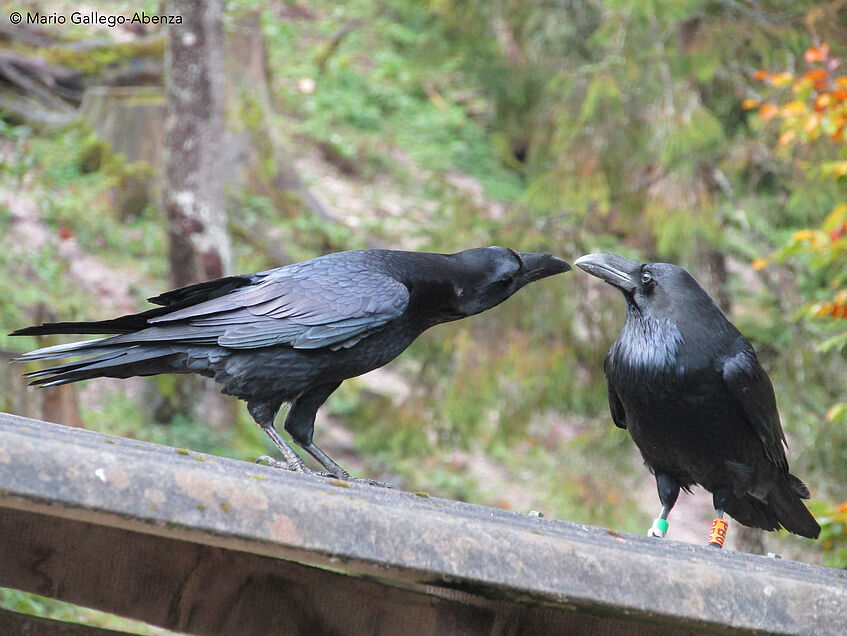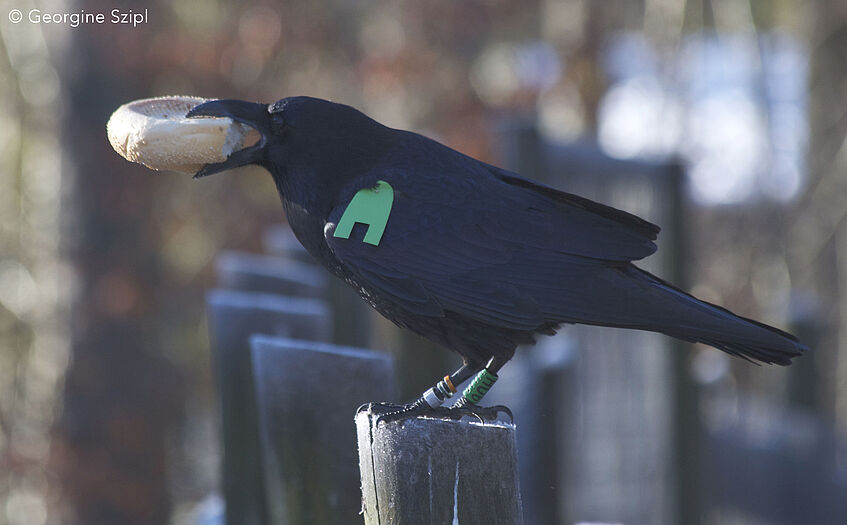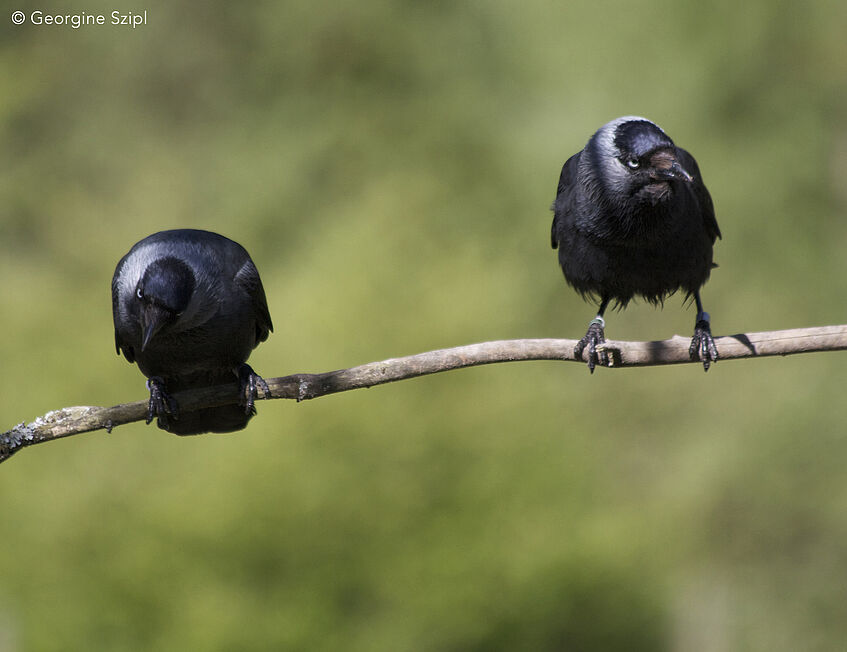Corvids
Common ravens

Ravens are the largest songbirds on earth. Their huge beak may serve to cut open carcasses, or to gently groom a social partner. Ravens are long-term monogamous. Once they found a partner for life and managed to establish a territory, they start breeding and defend their territory aggressively against conspecifics. Before becoming territorial breeders, however, ravens assemble in large non-breeder groups for feeding and roosting. These non-breeder societies are characterized by high fission-fusion dynamics, with constantly changing group sizes and compositions over time. Living in such complex societies is cognitively challenging, and most likely the reason for ravens' high cognitive abilities.

The Alm valley is inhabited by a large non-breeder group of free-ranging ravens. The ravens use the Wildlife Park to scrounge food from the animals kept there. Since 2008, researchers of the Konrad Lorenz Research Station have made an effort to mark the ravens individually using coloured wingtags and leg bands with individual alphanumeric codes. Some ravens are equipped with GPS loggers which allow us to track their movements even if they leave the valley. Additionally, the free-ranging ravens have been habituated to human observers at several enclosures in the park. This allows us to investigate ravens' social and cognitive skills under naturalistic conditions.
Jackdaws

Jackdaws and ravens are closely related and belong to the same genus (Corvus), but jackdaws differ strikingly from ravens in some aspects of their socio-ecological organization. Whereas ravens are the masters of food-caching, jackdaws do not cache at all. From adulthood, ravens live in pairs, but jackdaws live in groups their entire life. These aspects make jachdaws interesting subjects for comparative studies. In spring 2005 we hand-raised our first group of jackdaws, and added more birds in 2006 and 2007. In spring 2007, we released the first group of birds into free flight, followed by another group in 2009. Free-ranging jackdaws joined this flock, and those birds still roam the valley, and forage and breed at the Cumberland Wildlife Park.
